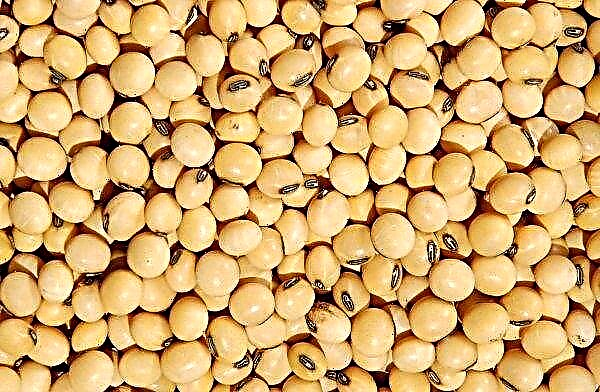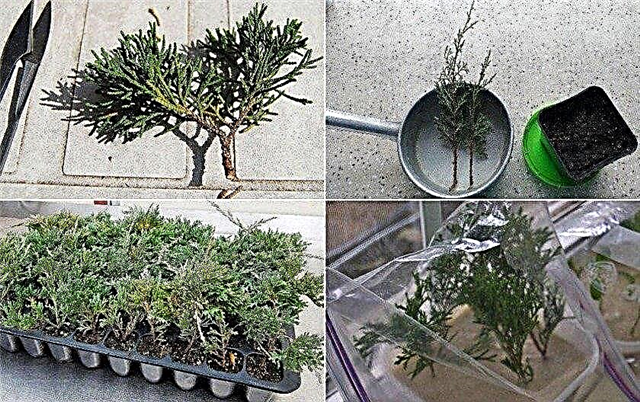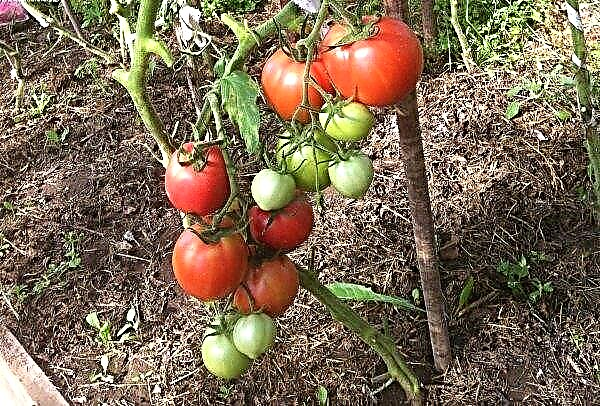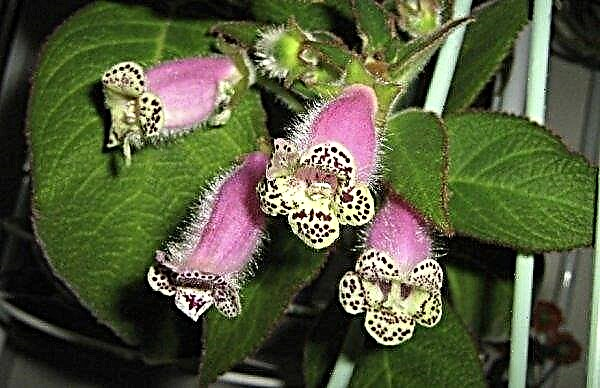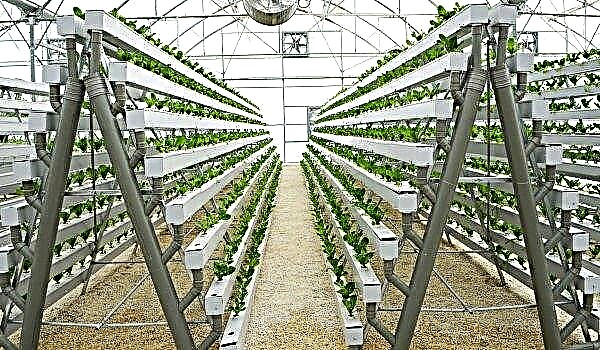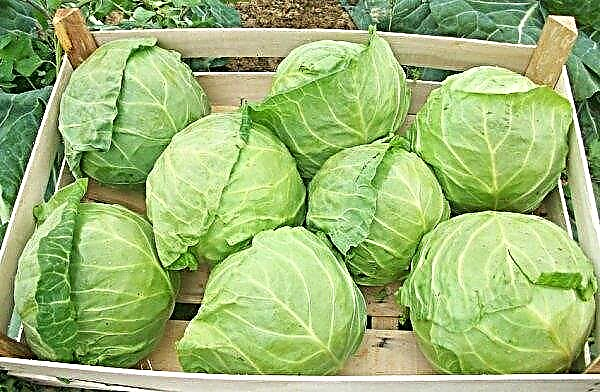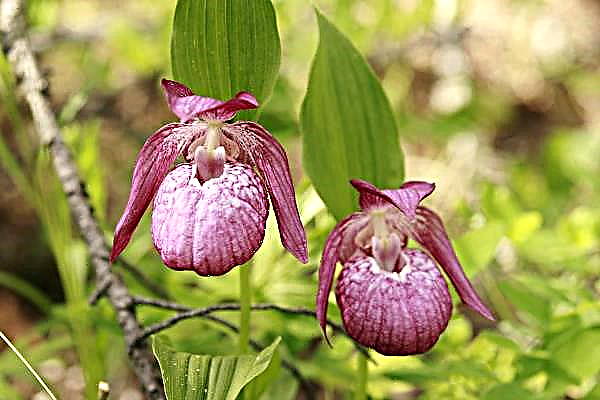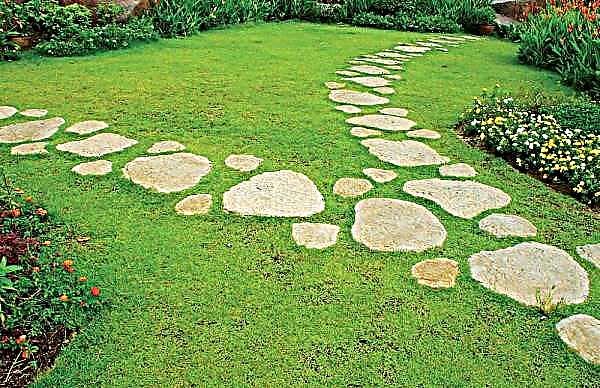Cordilina is a popular decorative and deciduous plant that decorates apartments, office premises, greenhouses. Florists appreciate it because of its exotic appearance, unpretentiousness, rapid growth and a large selection of species that differ in size, shape and color of foliage, and color of flowers.
The main types of cordilina
Cordilin is classified as an asparagus family. It can grow in the form of trees, shrubs and shrubs. Homeland of culture - tropical and subtropical areas of Asia, Australia and America.
The external data of cordilina is very similar to another indoor flower - dracaena so much that they are often confused and even sold under the same name. However, the morphology of these two plants is different.
Cordilina grows to large sizes. It is very similar to a palm tree, which is why it is often called a false palm. The culture forms a tall trunk with beautiful narrow leaves. In indoor conditions, it can reach a height of 1.5 m, in the wild - 15 m. As it grows, the leaves of the lower tier fall off, and the bottom of the trunk is exposed.
The plant has a powerful root system in the form of white tubers. Its flowering is inconspicuous - with small flowers collected in panicles. The color of the flowers depends on the species - it can be red, white, purple.
Today, the genus of cordilin has 26 species. We invite you to get acquainted with those that are grown indoors.
Australian or Southern
This species originated from New Zealand. In the natural environment, it reaches a height of 15 m. The trunk of it thickens to the base, the leaves are collected in a bunch at the top. Leaflets in the form of swords, 40–90 cm long and 3–7 cm wide. They are green. There are varieties that have longitudinal red or yellow stripes on the foliage.
The Australian cordilina blooms with inflorescences in the form of panicles 0.5–1 m long. The flowers are white, reaching 1 cm across. After flowering, fruits are formed - white berries 0.5–0.7 cm across.
In room culture, the southern cordilina has been used for a long time - since the 60s of the 19th century. When grown in a house, its height does not exceed 3 m. Flowering is absent or is observed very rarely.
Did you know? Leaves of southern cordilina in its homeland for 8 centuries in a row were used by the indigenous inhabitants of New Zealand. During archaeological excavations, special furnaces were found in which the plant was prepared.
Benksa
Another species that lives along the shores and highlands of New Zealand. The plant has a thin high trunk. Long lanceolate leaves — 0.6–1.5 m long, sharp at the ends, green. They grow on petioles 15–20 cm long, which are directed upwards. Form bunches. Flowering white. Inflorescences in the form of long brooms 1–1.5 m in length. During flowering, the plant exudes a pleasant aroma.
The flower adapts well to indoor growth, in winter it requires a decrease in temperature, so it is ideal for cultivation in winter gardens.

Apical or shrubby
A tropical species whose trunk in nature grows to 4 m in height and 1.5 cm in diameter. It grows in southeast Asia, in New Guinea, Australia, on islands in the Pacific Ocean.
The plant has large long ovoid leaves, 30-60 cm long and 5-10 cm wide. Most of the varieties are with green leaves. But the shrubby cordilines with red and yellow foliage look spectacular.
During flowering, long panicles up to half a meter long appear on the plant. Yellow flowers bloom in them. After flowering, red berries ripen.Did you know? Hawaiians call cordilina a tree of fortune and in the hope of finding it to this day plant a plant near the house. In ancient times, they made them lei for high priests and leaders, placed in the corner of the dwelling to scare away unclean spirits.
Rhizomes and leaves of shrub cordilina are suitable for eating. Today in Hawaii, they make a dessert called culolo.

Kiwi
Cordilina kiwi is one of the most beautiful varieties. Her homeland is Australia. The plant grows in a small bush, at home - up to 1-1.5 m in height. He has very beautiful leaves. Against the background of the main dark green color, longitudinal wide yellow stripes and raspberry fringing are located. The older the plant, the brighter the color of its foliage.
When flowering cordilina, kiwi produces long panicle inflorescences with small purple flowers.

Red
Like the previous variety, cordilina red is also from Australia. In the natural environment reaches a height of 3 m. Named so by the color of the leaves - they have her bright red. The shape of the leaves is lanceolate. In length they grow up to half a meter, in width - up to 3.5–4.5 cm. The color of the foliage is dark green, with well distinguishable veins.
The plant blooms with axillary panicles 30 cm long, in which small flowers of lilac color are collected.
This cordilin in autumn and winter must be grown in cool conditions. In summer, she will feel great in the fresh air - a balcony, a loggia, a terrace.

Undivided
Undivided cordiline is found naturally in New Zealand. It grows in the form of a tree up to 12 m in height. She has a thin but strong barrel. The leaves look like belts 13-15 cm wide and up to one and a half meters long. The top plate is painted dark green. In the center of her lies a red vein. The bottom plate has a bluish tint.
When flowering, the plant releases drooping branched inflorescences with white flowers. When growing this variety in a room environment, it is necessary to lower the temperature in the winter.
Straight
Direct cordiline came from Australia. This is a tall tree with a thin bole. In the wild, its growth is up to 5 m. Thin and long leaves form on the trunk. Their length is up to half a meter, width - up to 2 cm. This variety blooms in delicate purple with pink tint. Peduncles reach a length of 15 cm. After flowering, dark purple or black berries are formed.
By the way, several varieties can be planted in one pot, thus forming a mix. Cordilin compositions with various foliage colors look very beautiful.
Other varieties deserve the attention of gardeners. For example, undersized: cordilina compacta, which when grown in a pot does not exceed 90 cm, and tango up to 70 cm high. Cordilina mambo is very effective - its dark beetroot leaves with raspberry rims are unlikely to leave anyone indifferent.

Growing and caring at home
One of the main advantages of cordilina is its simplicity in planting and care. Like any tropical plant, this flower loves heat, moisture and light, does not tolerate drafts and sudden temperature changes, so when choosing a location for growing, you should choose a place near the window where diffused sunlight penetrates well. From March to August, the plant grows best and develops near windows facing east and west. In winter, near the southern openings.
The temperature regime in the warm season will be the same for both tropical and subtropical species. The optimum temperature for the flower during this period is from + 20 ° С to + 25 ° С. In winter, tropical species grow well at +18 ... + 20 ° С. But for those plants that came from the subtropics, you need to arrange a rest period with a gradual decrease in temperature to +5 ... + 10 ° С.
Care measures include standard procedures for indoor plants: watering, spraying, top dressing, pruning, transplanting.
Watering can be done in the traditional way - top or bottom - in the pan. The second method is preferred.
Moisturize the soil as soon as its surface layer dries, about 1-2 times in 7 days in the hot period and once in 7-10 days in the cold. With a decrease in temperature in winter, the amount and volume of irrigation is reduced to a minimum.
We also recommend reading about other decorative foliage plants:
To moisturize, take water, warmed to room temperature, standing for at least 1 day.
The frequency of spraying will depend on the type of cordilina. If the plant you grow comes from the tropics, then from May to August you need to spray it daily or put it on a pallet with moistened pebbles, expanded clay. The rest of the period, the procedure is carried out periodically or as needed. It is also useful to wipe the sheets with a damp cloth.
Subtropical species are rarely sprayed. As in the case of irrigation, water is taken only warm and settled.
From March to September, cordillin needs to be fed every 2 weeks. Tropical species also fertilize in autumn and winter, but only 1 time per month. They acquire complex mineral fertilizers that are suitable for indoor decorative and deciduous crops.
Formative scraps of this plant are not produced. It must be cut only with sanitary purposes in the spring or with a strong stretching of the stem.
Young specimens under 4 years old are transplanted into new soil and a pot every year, mature ones - once every 2-3 years. The procedure is performed in March. Soil substrate is acquired or mixed from 3 parts of garden soil, 1 part of sand and 1 part of peat. When transplanting, the pot must be filled 1/3 with drainage.

Propagation Features
Cordilina can be propagated by dividing the rhizome, rooting cuttings and sowing seeds. At home, only the first 2 methods are used. The seed method is very troublesome and time-consuming.
In order to produce reproduction by division, it is necessary to remove the flower from the pot and clean the roots of the earth. After that, cut off a part of the tuber, cut off all the roots from it and cut into several parts. Divided rootlets in loose light soil under the film. During rooting, regular ventilation and watering are needed. After a month, when the roots appear on the divisions, they are transferred to flower pots.
Cuttings for propagation are harvested in the spring. The apical or median cuttings with 1–4 nodes or stem segments of 10 cm are taken. They are planted in a moist substrate or water and placed in temperature conditions of +25 ... + 30 ° C or a mini-greenhouse is arranged under glass, a film, and plastic container. . The roots should appear after a month. Rooted cuttings are placed in pots.
Video: Reproduction of cordilina
Diseases and Pests
If you create favorable conditions for the plant and provide quality care for it, then procedures such as treating diseases and getting rid of harmful insects can most likely be avoided. But ignoring the care measures, conducting them irregularly and incorrectly leads to the fact that the flower begins to hurt. The main symptoms of Cordilina's poor health are her depressed appearance, yellowing and dropping of leaves, brown spots on the leaves, stunting.
Most often, the plant affects root rot. The development of the disease occurs because the flower grows with constant waterlogging and in cold temperatures. In such conditions, it begins to languish, stops growing, its leaves dry out. In this case, drying the soil and replanting in a new pot and soil can help. Sick roots need to be trimmed, and healthy ones should be treated with a systemic fungicide.
Of the pests, the mealybug, spider mite, scutellum and whitefly can attack cordilin. If the insect damage is not strong, then you can fight them with folk remedies. In case of massive damage, treatment with chemicals is required. In the table, we have collected funds that help with parasite damage.Important! If most of the roots are affected, then the plant cannot be saved. It is necessary to cut off the top, root it and grow a new flower.
| Insect | Treatment with folk remedies | Chemical treatment |
| Mealybug (miniature insect, covered with a white coating) | Spraying:
| Spraying:
|
| Spider mite (small sucking insect of red or black color) |
| Spraying:
|
| Scutellum (small sucking insect with a hard shell on its back) | 1. Spraying and rubbing:
| Treatment:
|
| Whitefly (butterfly with white wings) | Spraying:
| Spraying:
|
So, if you are choosing an exotic plant in your room or office, then you should undoubtedly consider the option of acquiring cordilina. It is suitable for almost any interior, has a high growth rate and does not require much attention.Important! Chemical plants are sprayed on indoor plants only in case of severe infection. Spend 2-3 treatments at intervals of a week. At the same time, do not forget to use personal protective equipment.

